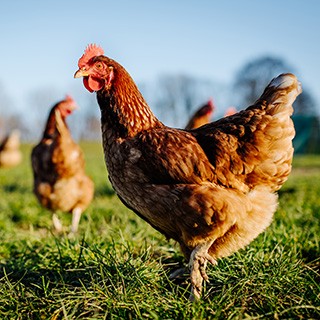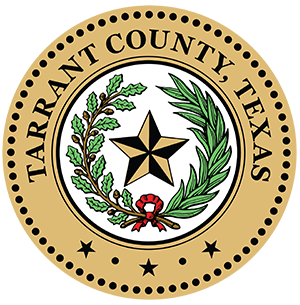
Bird Flu (Avian Influenza)
Avian Influenza (AI) - the bird flu, is a virus that infects wild birds, such as ducks, gulls and shorebirds, and domestic poultry (chickens, turkeys, ducks and geese). There is a flu for birds just as there is for humans and, as with people, some forms of the flu are worse than others.
AI strains also are divided into two groups based upon the ability of the virus to produce disease in poultry: low-pathogenicity avian influenza (LPAI) and high-pathogenicity avian influenza (HPAI).
LPAI, or "low path" avian influenza, usually occurs in wild birds and can spread to domestic birds. in most cases it causes no signs of infection or only minor symptoms in birds. These strains of the virus pose little threat to human health. LPAI H5 and H7 strains have the potential to mutate into HPAI and are closely monitored.
HIAP, or "high path" avian influenza is often fatal in chickens and turkeys. HPAI spreads more rapidly than LPAI and has a higher death rate in birds. HPAI H5N1 is the type rapidly spreading in some parts of the world.
How can people become infected with avian influenza
The HIAP H5N1 virus does not usually infect people. Since 2004, more than 200 human cases have been reported. Most people who have become sick from H5N1 have had extensive, direct contact with infected poultry. Illnesses in people from bird flu virus infections have ranged from mild (e.g., eye infection, upper respiratory symptoms) to severe illness (e.g., pneumonia).
Infected birds shed H5N1 viruses in their saliva, mucous and feces. H5N1 virus infections among people are rare; however, human infections can happen when enough virus gets into a person’s eyes, nose, or mouth, or is inhaled. People with close or lengthy unprotected contact (not wearing respiratory or eye protection) with infected birds or places that sick birds or their mucous, saliva, or feces have touched, may be at greater risk of H5N1 virus infection.

Spread of earlier H5N1 viruses from one infected person to a close contact in the past have happened very rarely and have not led to sustained person-to-person spread.
Broad concerns about public health relate to the potential for the virus to mutate, or change into a form that could easily spread from person to person, a characteristic that could result in human influenza pandemic. There is no evidence that this is occurring. Strains of AI that have been detected in U.S. poultry - including LPAI and HPAI, have caused no known human illnesses.
There is ongoing surveillance
The U.S. Department of Agriculture (USDA) works with Federal and State partners and industry to monitor U.S. bird populations. Surveillance is conducted in four key areas: live bird markets, commercial flocks, backyard flocks and migratory bird populations.
Extensive testing occurs in live bird markets and commercial flocks. Additionally, birds that show signs of illness are tested.
Though a backyard flock biosecurity program the USDA encourages backyard and small poultry producers to strengthen biosecurity practices in order to prevent the introduction of AI into their flocks. Biosecurity refers to the practical management practices that help to prevent diseases.
The USDA recommends owners of backyard flocks to follow these six tips to prevent poultry disease:
- Keep your distance (restrict access to your property and your birds),
- Keep it clean (clean, disinfect your clothes, shoes, equipment and hands),
- Don't haul disease home (if you have been near other birds or bird owners, clean and disinfect poultry cages and equipment before going home),
- Don't risk disease from your neighbor (do not borrow lawn and garden equipment, tools or poultry supplies from other bird owners),
- Know the warning signs (sudden increase in birth deaths, sneezing, coughing, nasal discharge, watery or green diarrhea, lack of energy, poor appetite drop in egg production, swelling around the eyes, neck and head, and purple discoloration of wattles, combs and legs; and
- Report sick birds (call your local or state veterinarian, or USDA toll-free 1-866-536-7593).
In the event of a HPAI outbreak in the United States, the USDA would work with states and industry to respond quickly and decisively following these basic steps:
- Quarantine - restrict movement of poultry and poultry-moving equipment into and out of the control area,
- Eradicate - humanely euthanize,
- Monitor regions - broad area of testing,
- Disinfect - kill viruses, and
- Test - confirm the poultry farm is AI virus-free.
The USDA maintains a bank of AI vaccine that could be used to protect healthy birds outside a control area, if necessary.

Resources for Poultry Owners
Penn Extension:
Make Biosecurity Your Routine!
Texas A&M AgriLife TODAY:
Texas A&M Poultry AgriLife Extension
Texas AgriLife Poultry Extension Facebook page
Instagram: @tamu_agrilife_posc_extension
Texas Animal Health Commission:
Keep your Backyard Chickens Healthy
For questions, Texas poultry owners can call 1-800-550-8242
For more information about the flu, click on the Flu season is here again.


 TARRANT COUNTY, TX
TARRANT COUNTY, TX

 Epidemiology
Epidemiology